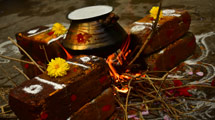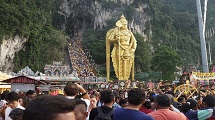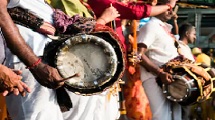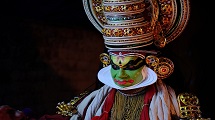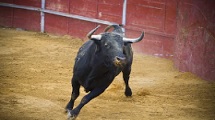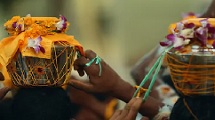The state of Tamil Nadu is not just another fascinating tourist destination. It is home to plenty of great festivals as well. Pongal is a festival in Tamil Nadu that engages people in a way that becomes a medium of unity and integrity. Despite being a harvest festival, the Pongal festival is much more than that.
Regarding festivals, no one can ignore the importance of food. In this case, the food and the festival go by the same name. The Pongal festival is a harvest celebration where Pongal food is served to deities.
This article is about various Pongal dishes and the other side dishes that come with the recipe.
Pongal festival is one of the biggest festivals in Tamil Nadu. Pongal indicates the beginning of a Tamil month named Thai. This month is considered holy for the people of Tamil Nadu. They celebrate Pongal through a four-day-long ceremony. The first day is Bhogi Pongal, and the main festival falls on the second day, Surya Pongal. The festival concludes with Mattu Pongal and Kaanum Pongal.
Through the Pongal festival, the Uttarayan of the Sun begins. It means that from this time on, the Sun starts to move north. According to the Hindu religion, Uttarayan is a holy occasion when people must request mercy for their wrongdoings. They pray to the Sun god to shower blessings.
Generally, the Pongal festival falls in the middle of January. Schools and colleges of Tamil Nadu remain closed this time around. People rise early in the morning, wear new clothes, and decorate their houses with Kolam. They boil newly harvested rice with milk and sweet ingredients and adorn house premises. The more the milk spills over, the more prosperity spills over. Theres an interesting ritual conducted around the boil with people chanting.
Pongal dishes in Tamil Nadu are quite famous. During Pongal, several popular Pongal dishes are traditionally prepared in Tamil households. Pongal recipes are of two variations: sweet Pongal and spicy Pongal. Spicy Pongal is a form of khichdi made during the Pongal festival and an everyday breakfast recipe.
8 Popular Pongal Special Foods of Tamil Nadu
Below are some Pongal South Indian dishes, including Pongal special foods:-
- Sweet Pongal
- Ven Pongal
- Coconut Chutney
- Traditional Sambar
- Payasam
- Medu Vada
- Coconut Rice
- Tomato Chutney
Sweet Pongal
Sweet Pongal is a significant Pongal food in Tamil Nadu. It also goes by the name of Sakkarai Pongal. In this Pongal dish, rice is boiled with moong dal, ghee, and jaggery and garnished with nuts, cashews, and cardamoms. People believe that this recipe is essential to bring prosperity after harvesting. They serve it to the Sun god as a part of the Pongal ritual. It is made either in a pressure cooker or in a traditional pot. It is cooked in the direction facing the Sun, in the east.
Ven Pongal
Ven Pongal is one of the variations of Pongal khichdi. This particular Pongal dish is full of spice. For the people who seldom like the sweet version of Pongal rice, this recipe is for them. It is also a very significant part of the Pongal festival. While Sakkarai Pongal is prepared as prasad in temples, Ven Pongal is made in households. People prepare this as a symbol of a never-ending supply of sustenance. The ingredients for this Pongal dish include rice, moong dal, black pepper, ginger, cumin, curry leaves, and ghee. Most South Indian dishes are paired with sambar or coconut chutney for the perfect taste.
Coconut Chutney
Coconut chutney for Pongal is immensely popular in Tamil Nadu. It enhances the taste of any South Indian recipe. Since coconut is easily available in South India, its use in most dishes prepared in the state is daily. Popular South Indian recipes such as Upma, Dosa, Idli, Vada, Appam, Paniyaram, and Pongal dont taste the same unless paired with coconut chutney. A famous Pongal chutney, it is made with chana dal, raw coconut, tamarind, green chillies, curry leaves, ginger, and mustard seeds.
In South India, including Tamil Nadu, chutney powders are prepared from dried and roasted lentils. Because of the British invasion, chutney is now widely recognized in the world. Coconut chutney can be stored for some in case some good quality ingredients are used.
Traditional Sambar
Sambar, a famous recipe of Tamil Nadu, is a Pongal special food item in addition to a regular meal component. It complements every Pongal dish prepared, especially Ven Pongal. At the time of the Pongal festival, sambar is made with a varied range of vegetables.
According to legend, the traditional Sambar recipe has come from Maratha ruler Shivajis son Sambhaji. While the people of Tamil Nadu make this with brinjal, and drumstick radish, in Kerala, they use carrots and potatoes.
Payasam
It is not possible to celebrate any South Indian festival without preparing payasam. This Pongal dish is considered lucky for any special occasion. The history of payasam goes back thousands of years. During the Pongal festival, several payasam recipes are popular. Sabudana payasam, Kadalai Paruppu payasam, Aval payasam, Semiya payasam, and Rice payasam are the best options to celebrate this festival. Traditionally prepared with rice, milk, dry fruits, and jaggery, every payasam recipe is delicious.
Medu Vada
Medu Vada is a famous breakfast recipe in Tamil Nadu. This savoury doughnut-shaped breakfast snack goes well with coconut chutney or sambar. Prepared with coconut, herbs, black grams, and other spices, it is tender on the inside and crunchy on the outside. It is one of the authentic Pongal dishes. Most people make this Pongal dish easily at home. The recipe originated from a small town in Karnataka, Maddur.
Coconut Rice
In Tamil Nadu, people like to include coconut no matter what they make. Likewise, coconut rice is a beloved Pongal rice recipe on the day of Kaanum Pongal as Naivedyam. On this day, preparing a rice recipe is compulsory. In this recipe, rice is mixed with coconut, ginger, curry leaves, and other spices. This Pongal food item is entirely different because of the sweet coconut and hot spices.
Tomato Chutney
Tomato chutney for Pongal is one of the most frequently made recipes in Tamil Nadu. It is not only a Pongal side dish but also eaten with idli and dosa. Tomato chutney is made with fresh tomatoes, red chillies, groundnuts, sesame, and oil. It is delicious and goes best with Ven Pongal. People of Tamil Nadu enjoy this Pongal special food all time of the year. However, during the four day festival, sincere thankfulness and gratitude with near and dear ones for the elements is a privilege.
There are many tasty South Indian dishes every person must want to eat. All the famous restaurants in Tamil Nadu will serve some delicious dishes which include Masala Dosa, Kari Dosai, Elaneer Payasam, Nethili Fish Fry, Kothu Parotta, Sundal, Meen Kozhambu, etc.





